Accepted Scientific Name: Parodia leninghausii (K.Schum.) F.H.Brandt
Kakteen Orch. Rundschau Kakteen Orch. Rundschau 7(4): 61. 1982 basionym cited as Pilosocereus leninghausii F. Haage = Pilocereus leninghausi~ F. Haage
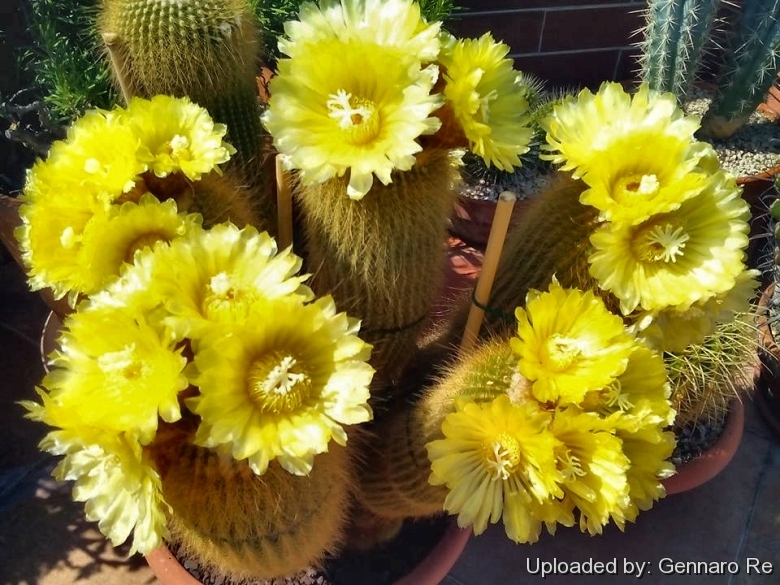
Malacocarpus leninghausii (Parodia leninghausii) Photo by: Gennaro Re
Origin and Habitat: Parodia leninghausiiSN|14697]]SN|14697]] is endemic to Rio Grande do Sul, Brazil.
Altitude: It occurs at elevations of 300-1300 meters above sea level.
Habitat: This species grows in hilly grassland and on walls between cracks in the rocks or in the shade of larger growing plants in pine forest. This species is abundant where it occurs. Many of its subpopulations have been extirpated. It grows in one of the most temperate region of the countries with warm and cool seasons and weather can become very cold during the winter nights, often it will fall to just above freezing without harming the plants as it is also very dry. The soil there is well drained and has a fairly high organic content, derived from the decomposition of other plants.
Synonyms:
See all synonyms of Parodia leninghausii
back
Accepted name in llifle Database:Parodia leninghausii (K.Schum.) F.H.BrandtKakteen Orch. Rundschau Kakteen Orch. Rundschau 7(4): 61. 1982 basionym cited as Pilosocereus leninghausii F. Haage = Pilocereus leninghausi~ F. HaageSynonymy: 17
Cultivars
(4):
back
Common Names include:
ENGLISH: Yellow Tower cactus, Golden Ball, Lemon Ball
RUSSIAN (Русский): Пародия Ленингxауза
Description: Parodia leninghausiiSN|14697]]SN|14697]], still known in cultivation with its old name Eriocactus leninghausiiSN|14701]]SN|14701]], is a very popular cactus species appreciated because glistens under a haze of harmless golden spines and will produce silky yellow flowers, with a lovely reflection in the petals only when mature (5 years or so), but the blossom in summer is worth the wait. Sometimes, they present monstruous amd cristate forms.
Habit: It is a shortly columnar cactus that branches and will start to cluster from the base as it ages.
Stem: At first globular then columnar up to 60(100) cm tall, 8-12 cm in diameter, with an angled crown.
Ribs: About 30.
Spines: Harmless, golden and bristly.
Flowers: Near the top, 5-6 cm in diameter pure yellow, silky, shining with a lovely reflection in the petals.
Blooming season: It blooms only when mature (at least 20 cm tall) in Spring to late Summer. Blooms more than once a year.
Subspecies, varieties, forms and cultivars of plants belonging to the Parodia leninghausii group
Bibliography: Major references and further lectures
1) Tony Mace “Notocactus: a review of the genus incorporating Brasilicactus, Eriocactus and Wigginsia” Editorial Board/National Cactus & Succulent Society, 1975
2) Edward Anderson “The Cactus family” Timber Press, Incorporated, 2001
3) James Cullen, Sabina G. Knees, H. Suzanne Cubey "The European Garden Flora Flowering Plants: A Manual for the Identification of Plants Cultivated in Europe, Both Out-of-Doors and Under Glass" Cambridge University Press, 11/Aug/2011
4) David R Hunt; Nigel P Taylor; Graham Charles; International Cactaceae Systematics Group. "The New Cactus Lexicon" dh books, 2006
5) Walther Haage “Kakteen von A bis Z” Neumann Verlag, 1981
6)Larocca, J. & Machado, M. 2013. Parodia leninghausii. In: IUCN 2013. "IUCN Red List of Threatened Species." Version 2013.1. <www.iucnredlist.org>. Downloaded on 29 October 2013.
7) Urs Eggli, Andreas Hofacker: "Validation of the Name Parodia lenninghausii (Cactaceae), with a Note on the Lectotypification and Orthography of the Name". In: Novon. Volume 20, number 1, pages 30–32, 2010.
8) Urs Eggli, Leonard E. Newton: "Etymological Dictionary of Succulent Plant Names" Birkhäuser 2004
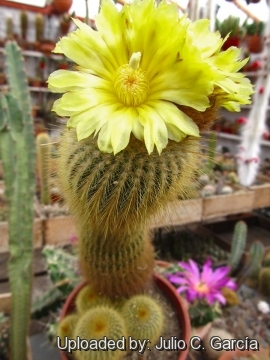 Malacocarpus leninghausii (Parodia leninghausii) Photo by: Julio C. García
Malacocarpus leninghausii (Parodia leninghausii) Photo by: Julio C. García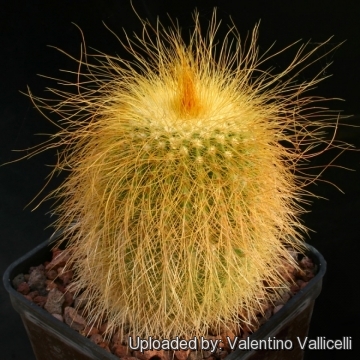 Malacocarpus leninghausii (Parodia leninghausii) Photo by: Valentino Vallicelli
Malacocarpus leninghausii (Parodia leninghausii) Photo by: Valentino Vallicelli young seedlings of born on the trunk of a ''Macrozamia moorei'' from seeds blown by the wind from a nearby plant!!! (Parodia leninghausii) Photo by: Flavio Agrosi
young seedlings of born on the trunk of a ''Macrozamia moorei'' from seeds blown by the wind from a nearby plant!!! (Parodia leninghausii) Photo by: Flavio Agrosi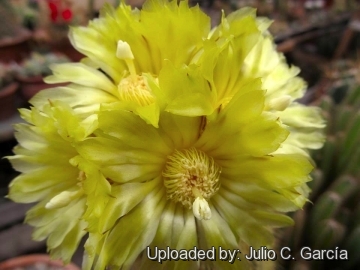 Malacocarpus leninghausii (Parodia leninghausii) Photo by: Julio C. García
Malacocarpus leninghausii (Parodia leninghausii) Photo by: Julio C. García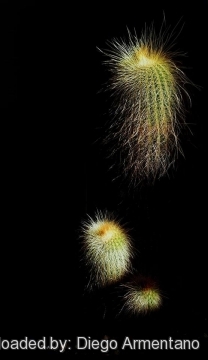 Malacocarpus leninghausii (Parodia leninghausii) Photo by: Diego Armentano
Malacocarpus leninghausii (Parodia leninghausii) Photo by: Diego ArmentanoSend a photo of this plant.The gallery now contains thousands of pictures, however it is possible to do even more. We are, of course, seeking photos of species not yet shown in the gallery but not only that, we are also looking for better pictures than those already present.
Read More... Cultivation and Propagation: Frost Tolerant as low as -4°C (or possibly colder) but in cultivation it is best to avoid any frost when during the winter the temperature can go down to 2° C without any harm so long as the compost is very dry. During the summer it is best to keep the plants outside where the temperature can rise to over 30 C with no harm to the plant.
Allows good drainage and use a an open and free draining mineral compost that allows therefore roots to breath.
They like only a short winter's rest and should be kept almost completely dry during the winter months, If the soil is allowed to be dry for too long root loss could follow but equally the same result would occur if the plants are both wet and cold. From March onwards the plant will begin to grow and watering should be increased gradually until late May when the plant should be in full growth.
Water regularly during the summer so long as the plant pot is allowed to drain and not sit in a tray of water. During hot weather you may need to water the plants more frequently so long as the plant is actively growing. From late September watering should be reduced to force the plant to go in to a state of semi dormancy, by October you should be back in to the winter watering regime.
Need full sun avoiding only the harshest summer sun, if kept too dark they may become overly lush and could be prone to rotting due to over watering, they will also be shy to produce flowers.
Feeding may not be necessary at all if the compost is fresh then, feed in summer only if the plant hasn't been repotted recently. Do not feed the plants from September onwards as this can cause lush growth which can be fatal during the darker cold months.
Repotting should be done every other year or every three years, annual potting is not necessary. Do not be tempted to over pot as this will cause the unused compost to go stagnant and you may loose the plant.
Propagation: Seed sowing and cuttings.















